House fires can be devastating, causing loss of life, property and possessions. Taking the necessary precautionary steps to protect your home from the dangers of fire is essential to maintain your health and safety.
Avoiding potential hazards that could lead to a house fire can be done by establishing a few common sense strategies. Make sure your smoke detectors are working properly and check them regularly.
Inspect all electrical cords and outlets in your home for signs of damage or wear and tear as these could become a potential ignition source. Never leave candles or open flames unattended, and ensure that any flammable materials such as mattresses, blankets and curtains are kept away from heat sources.
Regularly clean out dryer vents, stove tops, ovens, ducts and chimneys to prevent build-up of dust or lint that could catch fire. Finally, store combustible products such as gasoline away from living areas as much as possible.
By following these steps you will be able to significantly reduce the risk of house fires occurring in your home, thus protecting both you and your family's health from the dangers posed by them.

The risk to your health that can follow a house fire can be serious and long-lasting. Understanding the types of health hazards associated with fires and taking the right steps to protect yourself is essential.
Smoke and soot can contain toxic gases such as carbon monoxide, formaldehyde, and hydrogen cyanide which can irritate the eyes, nose, throat, and lungs and may lead to various respiratory problems. Inhaling these toxins may also cause headaches, dizziness, nausea, confusion and memory loss.
Additionally, exposure to hot smoke and other hazardous materials during a fire can cause thermal burns on skin or inhalation burns in the respiratory system. To protect yourself from potential health risks after a house fire it is important to promptly remove all damaged items from the property and seek professional help for cleaning up any remaining smoke residue or water damage.
Wear protective gear such as gloves when handling debris from a house fire as well as appropriate masks when dealing with hazardous materials or air quality concerns. Finally, consider consulting with your doctor or healthcare provider if you experience any symptoms of illness after a house fire regardless of how mild they may seem.
The physical and psychological effects of house fires can linger long after the flames have been extinguished. Aside from the more obvious risks to life, limb and property, survivors of house fires are often unaware of other potential health risks that may not present themselves until weeks or even months later.
For example, research has found that those exposed to smoke from a fire can suffer from respiratory issues such as coughing and difficulty breathing. Smoke inhalation can also damage the lungs and lead to chronic conditions such as asthma and bronchitis.
There is also evidence linking smoke inhalation to an increased risk of developing certain types of cancer. House fires often contain hazardous chemicals that can be inhaled or absorbed through contact with skin, leading to irritation and inflammation, as well as more serious long-term health implications.
In addition to physical dangers, psychological effects such as post-traumatic stress disorder (PTSD) are common among survivors of house fires, making it important for individuals affected by these tragic events to seek professional counseling if needed.
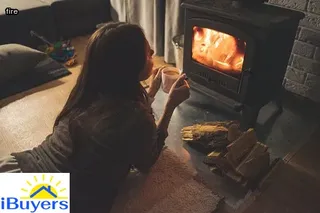
House fires can be devastating for families and cause severe health risks. It is important to recognize potential health implications after a fire has occurred.
The most common issues are due to smoke inhalation, which can cause respiratory problems and lung damage. Furthermore, the high temperatures of a fire may cause burns or other thermal injuries that require medical attention.
In addition, people who have been exposed to fire-related smoke may experience nausea or dizziness due to carbon monoxide poisoning. Lastly, it is essential to stay aware of any psychological effects such as depression or anxiety that may arise following a house fire.
Taking the time to understand these risks will help protect your health and wellbeing in the aftermath of such an event.
Mold is a common household hazard that can cause serious health problems if not identified and treated quickly. There are several types of mold that can be found indoors, including Black Mold, Stachybotrys Chartarum, Alternaria, Aspergillus, Penicillium, and Cladosporium.
Each type of mold has its own unique characteristics and must be identified in order to determine the best course of treatment. Black Mold is one of the most dangerous types of mold because it releases toxins into the air which can cause respiratory and neurological issues.
Stachybotrys Chartarum is another potentially hazardous type of mold that grows in wet or humid environments and can cause severe allergic reactions and skin irritations. Alternaria is commonly found outdoors but can also grow inside homes on damp surfaces such as bathrooms or basements.
Aspergillus is a type of fungus that typically grows on surfaces such as walls or carpets where there is high humidity levels; this type of mold requires immediate attention as it has been linked to a variety of health issues ranging from skin rashes to severe respiratory infections. Penicillium also thrives in damp areas but unlike Aspergillus it produces a strong musty odor which makes it easily identifiable; however, Penicillium should not be taken lightly as it has been linked to lung infections and other health complications.
Lastly, Cladosporium is often found growing on materials like wood or fabrics and although it does not produce any toxins, it can still trigger allergies if inhaled regularly over time. Identifying these different types of household molds will help protect your health from their potential dangers caused by house fires.
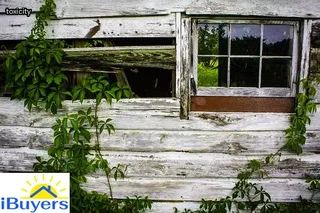
Smoke inhalation is one of the most dangerous health risks posed by house fires. Inhaling smoke from a burning structure can cause serious complications, including respiratory failure and cardiovascular collapse.
Smoke contains a variety of toxins, including carbon monoxide, hydrogen cyanide, nitrogen dioxide, and formaldehyde. These toxins can lead to a range of symptoms, from eye irritation and coughing to more severe breathing difficulties and even death.
In addition to these toxins, smoke also contains particulate matter that can penetrate deep into the lungs and cause long-term damage. Anyone exposed to the smoke from a fire needs to be assessed by medical professionals immediately in order to ensure they do not suffer any long-term consequences.
Taking preventative steps such as installing smoke detectors or having an emergency exit plan in place can help protect you and your family from the dangers of smoke inhalation during a house fire.
House fires can be incredibly dangerous, especially when it comes to protecting your health. Smoke inhalation and burns are two of the most common forms of injury in house fires, but there are also less obvious ways that these disasters can affect a person's health.
Skin and eye irritation can be caused by smoke, heat, and chemical exposure during a house fire. Chemical irritants in the air created by burning materials such as wood, plastics, fabrics and other synthetic materials may cause skin contact dermatitis.
This is an inflammatory reaction that affects the skin after contact with an irritant or allergen. Smoke inhalation can also be another source of skin irritation due to the presence of particles from burning materials that can embed in the skin and cause inflammation.
Another danger from house fires that is often overlooked is eye irritation caused by smoke and chemical exposure. These substances may cause conjunctivitis or redness of the eyes as well as stinging or burning sensations when exposed to them for long periods of time.
By learning about these risks and understanding how to protect yourself from them, you can ensure that your health remains safe during a house fire emergency.

After a house fire, it is important to understand potential food safety hazards that can occur due to smoke, ash and water damage. Firefighters use both water and foam-based extinguishers which can cause soot and smoke residue on surfaces.
This residue can contain hazardous materials such as lead, arsenic, dioxins and furans that could contaminate food items. Additionally, ash from the fire may contain hazardous materials such as asbestos or other toxic chemicals that are not safe for consumption.
It is also possible for soot to penetrate sealed containers of food making them unsafe to eat. Therefore it is essential to discard any opened food items or sealed containers that have been exposed to the fire in order to protect your health.
Furthermore, after a house fire you should always inspect appliances such as refrigerator/freezers to ensure their seals are still intact and there is no visible soot or ash contamination before using them again. Taking these precautions will help protect your health by keeping harmful substances out of your home's food supply.
When a house fire occurs, it is not only the damage caused by the flames that people need to be careful of. In addition to the physical destruction of property, chemical exposure from smoke and other burning materials can also lead to health problems.
This type of exposure can cause a variety of different issues including respiratory illnesses, skin irritation, eye problems, and even cancer in some cases. It is important for anyone who has been affected by a house fire to assess the potential dangers posed by chemical exposure and take steps to limit their risk.
This includes testing air quality both indoors and outdoors, wearing protective equipment when dealing with burned materials, avoiding contact with any hazardous substances that may have been released into the environment, and seeking medical attention if any symptoms arise. Taking these precautions can help protect your health from the potentially harmful effects of chemical exposure after a fire.

When a house fire occurs, the effects of the smoke and other pollutants released during the fire can linger in the air long after the flames have been extinguished. Examining indoor air quality after a fire is important to ensure that any hazardous materials or particles that may have been released during the blaze do not continue to pose a health risk.
Testing for toxins and other airborne contaminants should be done to determine if they exceed safe levels and, if so, what steps can be taken to eliminate them. The most common sources of toxins in a house after a fire are carbon monoxide, nitrogen dioxide, formaldehyde, and particulate matter.
Carbon monoxide is especially dangerous because it is odorless and colorless, making it difficult to detect without proper testing. It is important to take steps such as using an outdoor-rated HEPA filter system or professional air filtration units when possible to help reduce levels of these pollutants in order to protect your family's health from the dangers of house fires.
House fires can have a devastating impact on both the people and property affected by them. But it's not just physical destruction that can cause harm to those nearby – air pollution from fires can also be dangerous to your health.
Inhaling smoke and other pollutants released during a house fire can lead to serious respiratory issues, such as asthma attacks or lung diseases like COPD. These pollutants may also increase the likelihood of developing cancer due to long-term exposure.
Furthermore, air pollution from fires has been linked to neurological disorders in children and adults alike, including developmental delays and learning disabilities. It's important for people who live near house fires or in high-risk areas to understand the potential health risks so they can take steps to protect themselves and their families from the dangers of air pollution.
Taking preventive measures like installing smoke alarms, maintaining an escape plan, and staying informed about local fire safety regulations are all important parts of keeping your home safe from fire-related air pollution.

The psychological effects of a house fire can be severe and long-lasting. Victims of fires may experience fear, anxiety, depression, and other mental health issues following an event.
It is important to investigate the potential mental health impacts of house fires in order to understand how best to support those who have been affected. Additionally, understanding the psychological effects of such events can also help survivors prepare for future risks and find ways to cope with any post-fire trauma they may experience.
Survivors may benefit from seeking out treatment with a professional therapist who can provide them with resources and techniques to manage their emotions in a healthy way. Furthermore, talking with family and friends who have been through similar experiences can help survivors process their own feelings surrounding the event.
Taking steps to protect your mental health after a fire is an essential part of ensuring that you remain safe and healthy in your home.
No one ever plans for a house fire, but unfortunately, it is a reality for many people. If you have recently experienced a house fire, the financial stress of restoring and replacing your home contents can be especially difficult to cope with.
There are several steps you can take to lessen the potential financial stressors associated with dealing with the aftermath of a house fire. Start by assessing the damage done to your home and possessions so that you can put together an accurate tally of what needs to be replaced or repaired.
It is also important to contact your insurance company promptly in order to get all of the necessary paperwork started. Additionally, if your insurance covers only part of the cost of repairing or replacing damaged items, there may be other entities such as government programs or private charities that could offer additional resources.
Finally, it is important to create a budget plan outlining how you will manage whatever expenses lie ahead and strive towards paying off any debts incurred from the fire as quickly as possible.
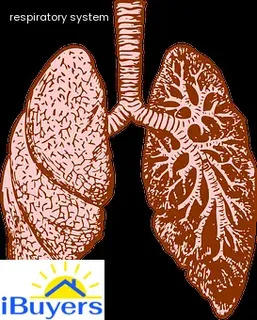
Exploring options for rebuilding and repairing homes post-fire is a crucial part of protecting your health from the dangers of house fires. After a fire has burned, it’s important to understand what steps need to be taken for rebuilding and repairs.
While the process may seem daunting, there are ways to make it easier. First, you should assess the damage and determine what needs to be done.
Depending on the type of fire, some materials may need to be removed completely while others can be salvaged with proper restoration techniques. It’s also important to know which materials are safe for reuse after a fire so that you can limit your exposure to hazardous flames or smoke.
You should also consider hiring professionals for renovations and repairs as they will have experience in dealing with post-fire situations and can help ensure the safety of your home. Lastly, if you feel overwhelmed by the process, don't hesitate to reach out for help from friends or family members who may have knowledge in this area.
It is important to do your research when it comes to protecting yourself and your family from the dangers of house fires. Home insurance coverage for fires can provide peace of mind in the event of a disaster, but it is up to you to make sure that you have the right policy and coverage in place.
Start by comparing different companies, their rates, and the types of coverage they offer. Look for policies that provide financial protection against fire damage, personal belongings, evacuation expenses, and any other applicable losses that occur due to fire.
Make sure to find out what the deductibles will be on any policy that you are considering - these can range from a few hundred dollars to several thousand dollars. Ask about exclusions so that you are aware of anything that may not be covered under the policy.
Finally, get everything in writing so that you understand exactly what is included in your home insurance coverage for fires.
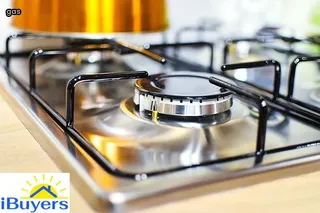
Following a house fire, it is important to seek emotional and practical support from both professionals and family members. Professional support can come in the form of therapy or counseling to help manage the emotions that often arise from experiencing such a traumatic event.
Local service providers may also be able to provide advice on resources available to those affected by house fires. Additionally, family and friends can offer much needed emotional support during this time, as well as help with practical matters such as finding temporary accommodation or obtaining new items of clothing or furniture.
If the fire was caused by an accident and not through negligence, insurance companies may be able to provide financial assistance to cover any costs associated with repairs or loss of possessions. Regardless of the cause of the fire, seeking early aid is essential in order for individuals and families to begin their recovery process.
When dealing with the aftermath of a house fire, managing the clean up process can be one of the most daunting tasks. It is important to take all necessary precautions to protect your health and safety during this process.
The most important thing to keep in mind is that you should never attempt to clean up after a fire without first consulting a professional. In addition to hiring an experienced team of professionals, it is also vital to ensure that you are keeping yourself properly hydrated and taking frequent breaks.
Additionally, protective gear such as face masks, gloves and goggles should always be worn when cleaning up after a fire. Taking these steps will help ensure that you are protecting yourself from any potential harm during the clean up process.
Furthermore, it is essential to pay attention to even the smallest details when cleaning up after a fire in order to make sure that everything is done correctly and safely. By following these tips, you can efficiently manage the clean up process while protecting your health from any dangers associated with house fires.

Recovering from a house fire is no easy feat. In addition to the physical and emotional trauma that comes with losing your home, you may be overwhelmed by the financial burden of rebuilding.
However, there are resources available to help you and your family stay safe and recover after a house fire. Knowing where to turn for assistance can make all the difference in getting back on your feet.
The American Red Cross provides emergency shelter and financial assistance to those affected by fires, as well as practical items such as clothing and household supplies to replace what has been lost. Other organizations such as FEMA offer grants for home repairs and building new homes in the event of a total loss.
Insurance companies provide coverage for losses caused by fires, including medical costs resulting from injury. Your local government may also have programs dedicated to helping with temporary housing or legal aid following a fire.
With the right support system in place, it is possible to get back on track after experiencing a house fire and protect your health in the process.
Living in a house after a fire can be a daunting task, as there are many potential health risks involved. It is important to take proper precautions to ensure your safety and well-being.
Air quality should be carefully monitored, as smoke and soot inhalation can cause respiratory issues and other complications. If possible, it is best to seal off any areas that have been damaged by the fire until they have been professionally cleaned and restored.
Structural integrity must also be taken into consideration when living in a house after a fire, so it is important to inspect ceilings, walls, and floors for signs of weakness or damage. Electrical systems should also be checked for malfunctions or exposed wires before use.
Additionally, all surfaces should be wiped down with an appropriate cleaning solution to remove any particles from the fire that may pose a health risk. Taking these steps will help you navigate living in a house after a fire safely without putting your health at risk.
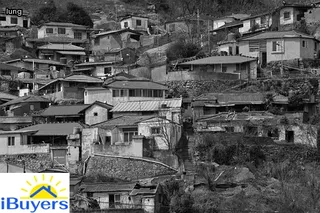
House fires are a major hazard, one that can cause catastrophic damage to both property and people. It is important for homeowners to be aware of the most important safety measures to protect their health from the dangers of house fires.
Fire safety starts with understanding the causes of residential fires, such as cooking accidents, faulty wiring, smoking, and arson. Regular inspection and maintenance of all fire sources like furnaces and wood-burning stoves is essential for reducing the risk of fire.
Adding smoke alarms throughout the home can provide an early warning system in case of a fire emergency. Additionally, it is important to have an up-to-date fire escape plan in place so everyone knows how to safely exit the home in case of an emergency.
Staying alert and having appropriate insurance coverage are also key components when it comes to protecting your health from the dangers of house fires. Finally, knowing what to do during a fire can help minimize injury or loss due to fires in the home.
Taking these steps can go a long way towards keeping you safe if a house fire ever occurs.
A house fire can be a devastating event. Unfortunately, the aftermath of a house fire can also have severe health consequences due to the toxic particles and smoke that are released into the air.
The smoke and fumes created by a house fire contain an array of toxic pollutants as well as carcinogenic substances such as benzene, formaldehyde and carbon monoxide. Exposure to these toxins can cause breathing difficulty, eye irritation, nausea, headaches and other health problems.
In some cases, long-term exposure to these unhealthy toxins may even lead to cancer or other serious illnesses. Therefore, it is essential for homeowners to understand how toxic their house may be after a fire in order to protect their health.
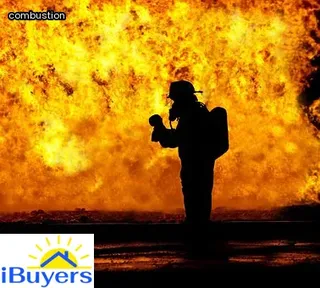
After a house fire, the air can be filled with dangerous toxins. Smoke from the burning materials can contain carbon monoxide, nitrogen dioxide, and formaldehyde.
These pollutants pose serious health risks to people who are exposed to them, especially those with pre-existing respiratory conditions. Inhaling smoke particles can also irritate the skin and eyes, and cause coughing or difficulty breathing.
To protect your health, it is important to evacuate any building that is on fire or near one as quickly as possible in order to avoid being exposed to these toxins.
Can the smell of smoke after a fire be harmful? Smoke inhalation can be the most dangerous health risk associated with house fires. The heat and toxic gases released when materials such as plastics, fabrics, and other materials burn can cause serious respiratory problems in those exposed to it.
Smoke is made up of a variety of hazardous substances including carbon monoxide, hydrogen cyanide, and other irritating gases. Inhaling these fumes can cause difficulty breathing, dizziness, nausea, confusion, eye irritation and even long-term damage to your lungs if you’re exposed to large amounts or for an extended period of time.
Protecting your health from the dangers of house fires starts with having working smoke detectors and a fire extinguisher on hand in case of an emergency. It is also important to stay away from any area that has been damaged by fire until it has been cleared by experts who know how to properly clean up the area and remove potential toxins that could harm your health.
The health risks associated with fire damage can be significant. Particles from smoke, soot, and ash can cause respiratory problems, including asthma, bronchitis, and lung damage.
These particles can also irritate the eyes, nose, and throat. Exposure to fire-related chemicals may cause skin irritation and even chemical burns.
Inhaling high levels of carbon monoxide or other gases produced by fires can lead to long-term neurological problems such as memory loss or difficulties concentrating. It is important to protect yourself from the dangers of house fires in order to minimize potential health risks.
Install smoke alarms throughout your home and practice emergency evacuation plans regularly. Have an expert inspect your heating system annually to reduce the risk of a deadly fire caused by a faulty appliance or wiring issue.
Stay alert for potential fire hazards like overloaded electrical outlets or combustible materials stored too close to heat sources. Taking these precautions will help you protect your health from the dangers of house fires.
A: After a house fire, smoke inhalation is a major health concern due to the presence of toxic chemicals. To minimize this risk, ensure that your home is equipped with working smoke alarms and fire extinguishers, develop an escape plan for all occupants, and consider using fire-resistant building materials during construction or renovations.
A: After a house fire, the smoke produced can contain toxic gases and particles that can irritate your eyes, nose, throat and lungs. Long-term exposure to these toxins can lead to serious health problems such as lung cancer or other respiratory illnesses.
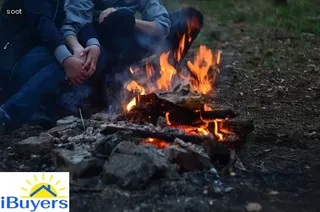
A: To reduce health risks after a house fire, it is important to install smoke alarms, check electrical wiring, keep fire extinguishers on hand, and create an evacuation plan.
A: It is important to store flammable items away from heat sources and areas of high humidity, as well as in containers that are labeled and airtight. Doing so will help reduce the risk of a fire occurring and minimize health risks if a fire does occur.
A: The main health risks after a house fire include smoke inhalation, which can lead to respiratory issues and other illnesses; burns from the flames, heat, or hot objects; and physical injuries from debris or other objects in the home.
A: Health risks associated with a house fire include smoke inhalation, burns, and carbon monoxide poisoning. Using smoke alarms, fire extinguishers, escape plans, and fire-resistant building materials can help reduce the risk of these health hazards in the event of a house fire.